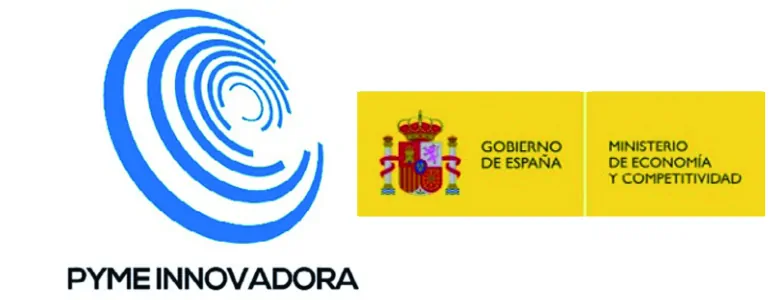
HORIZON EUROPE

 European
European
Specific Challenge:On 31 December 2019, the local authorities of Wuhan, Hubei province, China, reported a cluster of pneumonia cases of unknown origin. On 9 January 2020, the China Centre for Disease Control reported a novel Coronavirus (2019-nCoV) to be the causative agent.
As of 30 January 2020, 7824 laboratory-confirmed cases of 2019-nCoV have been reported including 170 deaths[1]. The disease has already spread to 19 countries outside China, with new cases continuing to emerge daily.
Recalling the SARS-CoV epidemic in 2003 with over 8000 cases reported (10% case fatality), it is crucial to rapidly gain a better understanding of the newly identified virus, especially in relation to potential clinical and public health measures that can be put to immediate use to improve patients’ health and/or contain the spread of 2019-nCoV.
Scope:Proposals submitted under this expression of interest are expected to advance the knowledge on 2019-nCoV and its impact on infected persons, with the aim of contributing to an efficient patient management and/or public health preparedness and response. Proposals must be timely, with rapid activation, to en...
see more
Specific Challenge:On 31 December 2019, the local authorities of Wuhan, Hubei province, China, reported a cluster of pneumonia cases of unknown origin. On 9 January 2020, the China Centre for Disease Control reported a novel Coronavirus (2019-nCoV) to be the causative agent.
As of 30 January 2020, 7824 laboratory-confirmed cases of 2019-nCoV have been reported including 170 deaths[1]. The disease has already spread to 19 countries outside China, with new cases continuing to emerge daily.
Recalling the SARS-CoV epidemic in 2003 with over 8000 cases reported (10% case fatality), it is crucial to rapidly gain a better understanding of the newly identified virus, especially in relation to potential clinical and public health measures that can be put to immediate use to improve patients’ health and/or contain the spread of 2019-nCoV.
Scope:Proposals submitted under this expression of interest are expected to advance the knowledge on 2019-nCoV and its impact on infected persons, with the aim of contributing to an efficient patient management and/or public health preparedness and response. Proposals must be timely, with rapid activation, to enable early and valuable outcomes to be established. For increased impact, proposals may wish to build on promising avenues from previous or ongoing research.
Considering that this is a newly identified virus, the scope of this expression of interest remains broad and may include topics such as:
Development of therapeutics, including monoclonal antibodies. As relevant, evidence of regulatory and ethics approvals for the investigational products included in the study(ies) must be presented.Development of point of care diagnostics, ensuring rapid evaluation of candidates based on existing technologies, to allow for fast case detection and surveillance.Clinical and epidemiological studies, to provide data on epidemiological characteristics such as viral genotype and pathogenicity; clinical information on host susceptibility and host immune responses; risk factors for severe disease; routes of transmission and their relative importance; identification of the animal reservoir; etc.Social sciences research, to provide urgently needed answers to social dynamics of the outbreak and the related public health response. Proposals covering investigation of therapeutic and/or vaccines should consider engaging with the European Medical Agency (EMA) to ensure adequacy of the proposals from a regulatory point of view, i.e. via the innovation task force[2], scientific advice or consultation in the context of the health threats interactions[3] [4].
Where relevant, proposals should consider the close collaboration with leading European supercomputing centres to use high-end computing, data and simulation resources in order to accelerate the processes of diagnosis and vaccine research and development. In this respect, the Supercomputing facilities in Barcelona (BSC) and Bologna (Cineca) are open to collaborate with any interested proposer or successful proposal. Other leading European supercomputer centres, such as the organisations hosting the PRACE Tier-0 supercomputers, may also be interested in such collaborations.
Applicants should be aware that proposals funded under this expression of interest will be required to make available their research data, in accordance with the relevant option of Article 29.3 of the H2020 model grant agreement. The use of harmonised protocols in collaboration with other actors is recommended for this purpose.
The Commission considers that proposals requesting a contribution from the EU of between EUR 2 and 3 million would allow this specific challenge to be addressed appropriately. Nonetheless, this does not preclude submission and selection of proposals requesting other amounts. Please note that expenditures can be covered from the date of submission of the proposal, but at the applicant’s own risk. Proposals can be concise and should focus on the essential information to facilitate an appropriate evaluation.
Expected Impact:To contribute to the diagnosis and clinical management of patients infected by 2019-nCoV.To contribute to the public health preparedness and response in the context of the ongoing epidemic of 2019-nCoV.
Cross-cutting Priorities:Socio-economic science and humanitiesOpen InnovationGender
[1]https://www.ecdc.europa.eu/en/novel-coronavirus-china
[2]https://www.ema.europa.eu/en/human-regulatory/research-development/innovation-medicines#ema's-innovation-task-force-(itf)-section
[3]https://www.ema.europa.eu/en/human-regulatory/research-development/scientific-advice-protocol-assistance/requesting-scientific-advice-protocol-assistance-ema
[4]https://www.ema.europa.eu/en/human-regulatory/overview/public-health-threats
see less
Consortium characteristics
 :
The aid is European, you can apply to this line any company that is part of the European Community.
:
The aid is European, you can apply to this line any company that is part of the European Community.
characteristics of the Proyecto
Los costes de personal subvencionables cubren las horas de trabajo efectivo de las personas directamente dedicadas a la ejecución de la acción. Los propietarios de pequeñas y medianas empresas que no perciban salario y otras personas físicas que no perciban salario podrán imputar los costes de personal sobre la base de una escala de costes unitarios
Los otros costes directos se dividen en los siguientes apartados: Viajes, amortizaciones, equipamiento y otros bienes y servicios. Se financia la amortización de equipos, permitiendo incluir la amortización de equipos adquiridos antes del proyecto si se registra durante su ejecución. En el apartado de otros bienes y servicios se incluyen los diferentes bienes y servicios comprados por los beneficiarios a proveedores externos para poder llevar a cabo sus tareas
La subcontratación en ayudas europeas no debe tratarse del core de actividades de I+D del proyecto. El contratista debe ser seleccionado por el beneficiario de acuerdo con el principio de mejor relación calidad-precio bajo las condiciones de transparencia e igualdad (en ningún caso consistirá en solicitar menos de 3 ofertas). En el caso de entidades públicas, para la subcontratación se deberán de seguir las leyes que rijan en el país al que pertenezca el contratante
Characteristics of financing
A number of non-EU/non-Associated Countries that are not automatically eligible for funding have made specific provisions for making funding available for their participants in Horizon 2020 projects. See the information in the Online Manual.
2. Eligibility and admissibility conditions: described in Annex B and Annex C of the Work Programme.
Proposal page limits and layout: please refer to Part B of the proposal template in the submission system below.
3. Evaluation:
Evaluation criteria, scoring and thresholds are described in Annex H of the Work Programme.
Submission and evaluation processes are described in the Online Manual.
The thresholds for each criterion will be 3 (Excellence), 4 (Impact) and 3 (Implementation). The cumulative threshold will be 11.
4. Indicative time for evaluation and grant agreements:
Information on the outcome of evaluation (Public Health Emergency): maximum 1 month from the deadline for submission.
Signature of grant agreements: maximum 2 months from the deadline for submission.
5. Proposal templates, evaluation forms and model grant agreements (MGA):
Research and Innovation Action:
Specific provisions and funding rates
Standard proposal template
Standard evaluation form
General MGA - Multi-Beneficiary
Annotated Grant Agreement
These documents are for reference only; for submission of proposa... 1. Eligible countries: described in Annex A of the Work Programme.
A number of non-EU/non-Associated Countries that are not automatically eligible for funding have made specific provisions for making funding available for their participants in Horizon 2020 projects. See the information in the Online Manual.
2. Eligibility and admissibility conditions: described in Annex B and Annex C of the Work Programme.
Proposal page limits and layout: please refer to Part B of the proposal template in the submission system below.
3. Evaluation:
Evaluation criteria, scoring and thresholds are described in Annex H of the Work Programme.
Submission and evaluation processes are described in the Online Manual.
The thresholds for each criterion will be 3 (Excellence), 4 (Impact) and 3 (Implementation). The cumulative threshold will be 11.
4. Indicative time for evaluation and grant agreements:
Information on the outcome of evaluation (Public Health Emergency): maximum 1 month from the deadline for submission.
Signature of grant agreements: maximum 2 months from the deadline for submission.
5. Proposal templates, evaluation forms and model grant agreements (MGA):
Research and Innovation Action:
Specific provisions and funding rates
Standard proposal template
Standard evaluation form
General MGA - Multi-Beneficiary
Annotated Grant Agreement
These documents are for reference only; for submission of proposals, the documents provided in the submission system should be used.
6. Additional provisions:
Horizon 2020 budget flexibility
Classified information
Technology readiness levels (TRL) – where a topic description refers to TRL, these definitions apply.
Members of consortium are required to conclude a consortium agreement, in principle prior to the signature of the grant agreement.
7. Open access must be granted to all scientific publications resulting from Horizon 2020 actions.
Public Health Emergency - Availability of research data
Beneficiaries in grants awarded under actions relating to Public Health Emergencies must make available their research data, at the latest within 30 days after it has been generated, through open access or, if agreed by the Commission, by giving access rights to those third parties that need the research data to address the public health emergency. Therefore the relevant option of Article 29.3 (option 1c) will be applied. It is expected that quality-controlled data are shared in accordance with the FAIR principles. The use of harmonised protocols in collaboration with other actors is recommended for this purpose.
A draft data management plan (DMP) must be submitted preferably with the proposal and at the latest before the signature of the grant agreement. The DMP should address the relevant aspects of making the data FAIR – findable accessible, interoperable and re-usable, including what data the project will generate, whether and how the data will be made accessible for verification and re-use, and how it will be circulated and preserved. A template for such a plan is given in the guidelines on data management in the H2020 Online Manual.
Eligibility of costs: costs related to data management and data sharing are eligible for reimbursement during the project duration.
The legal requirements for projects participating in this pilot are in the article 29.3 (option 1c) of the Model Grant Agreement.
8. Additional documents:
Introduction WP 2018-20
Health, demographic change and well-being WP 2018-20
General annexes to the Work Programme 2018-2020
Legal basis: Horizon 2020 Regulation of Establishment
Legal basis: Horizon 2020 Rules for Participation
Legal basis: Horizon 2020 Specific Programme
Additional information about the call
other advantages


